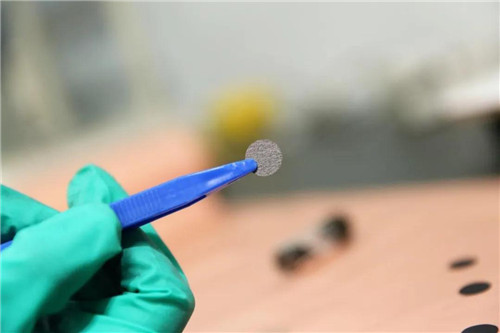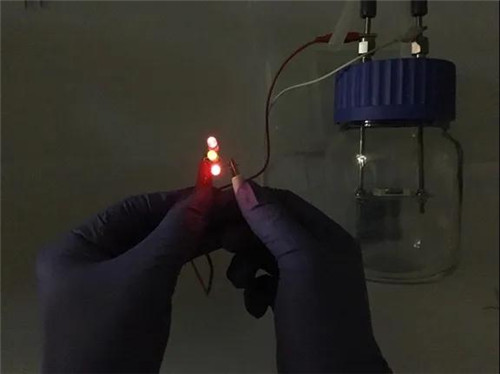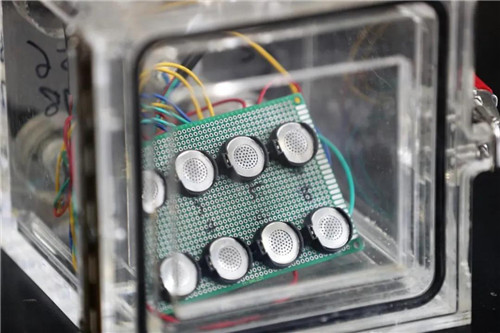Still worrying about charging your phone once a day? Still struggling with new energy vehicles not daring to run at high speeds? Don't worry at all, the carbon dioxide battery researched by Prof. Xie Keyu's team at the Nano-Energy Materials Research Center of Northwestern Polytechnical University offers the possibility to completely solve these problems. Experimental data shows that the battery developed by the team has improved battery life by 7 times compared to the traditional lithium battery of the same volume, and the materials used are more environmentally friendly. The research has broad application prospects in various electronic products, vehicles and even aviation and aerospace fields.
This battery is amazing
With the rapid development of human society, problems such as energy depletion and global warming are also intensifying. Finding solutions to the above problems has become a top priority for researchers. With the emergence of new energy technologies, various types of electrical energy storage and conversion devices have gradually developed. In recent years, lithium-ion batteries have been playing an important role in the global social economy. However, the problems of low theoretical energy density and short battery life of lithium-ion batteries have gradually become difficult to meet people's needs. How to develop a new battery has greatly improved the endurance and other indicators, which has always been the direction of the research of Professor Xie Keyu's team.

West China University of Technology has developed a carbon dioxide battery with a 7-fold increase in battery life
In Professor Xie Keyu’s laboratory, we saw a variety of new power supplies. One of the round button batteries caught the reporter’s attention. Don’t look at its small size. It is the “lithium- Carbon dioxide battery". If you look closely, you will find that the side of the battery is not a closed structure, but is composed of many holes. According to Professor Xie, compared with the lithium batteries that have been widely used commercially, the biggest advantage of lithium carbon dioxide batteries is their higher energy density. Experimental data shows that its capacity ratio is more than 7 times that of lithium batteries. Assuming that the mobile phone batteries we use now can last for 3 days, in the future, lithium-carbon dioxide batteries of the same weight and volume may be used for 21 days or longer.
Another advantage is the use of carbon dioxide gas to provide electrical energy, which can be described as turning "waste" into treasure. At the same time, it is more environmentally friendly than traditional lithium batteries in the entire energy conversion process. In addition, in some specific environments, for example, the carbon dioxide concentration on the surface of Mars is as high as 95%, and the carbon dioxide concentration in extreme environments such as the deep ocean is relatively high. In such exploration projects, lithium-carbon dioxide batteries can be "in-situ". Give full play to its advantages.
Core technology breakthrough
Lithium-carbon dioxide batteries have huge development potential and application value. As one of the metal gas battery families, its working principle is completely new compared with traditional batteries.
How can we overcome this huge challenge? Professor Xie Keyu's team started from the catalytic reaction mechanism and the macro design of the electrode to solve this problem.

West China University of Technology has developed a carbon dioxide battery with a 7-fold increase in battery life
Since no such research has been done before, everything starts from scratch. From the basic experimental body, experimental condition program to the test equipment, the team needs to build it by themselves. "It took us a whole year to figure out the process," said Wang Hui, a member of the project team.
In one experiment, the team found that the XPS peak was shifted. In order to find out the reason, they repeatedly discussed, analyzed, researched, and even read the book of solid physics "cross-border", consulted with many physics teachers, and finally in the solid matter Found the answer. The team designed a zinc sulfide quantum dot-nitrogen-doped graphene bidirectional catalyst with strong interfacial electron interactions. For the first time, the interface interaction was introduced into a lithium-carbon dioxide battery, and its mechanism of action was revealed in depth. The electrochemical performance of lithium-carbon dioxide batteries has been greatly improved.

West China University of Technology has developed a carbon dioxide battery with a 7-fold increase in battery life
The team is not satisfied with this. In terms of materials, for the problem of poor battery rate performance, Professor Xie Keyu's team and Professor Loh Kian Ping of the National University of Singapore jointly designed a covalent organic framework with structural stability. It was first introduced into a lithium-carbon dioxide battery as a gas battery diffusion layer, effectively improving the battery's charge-discharge cycle efficiency, and greatly alleviating the problem of slow mass transfer speed during battery charge and discharge. After using this material as the positive electrode gas diffusion layer, the excellent electrochemical performance exhibited by lithium-carbon dioxide batteries is at the forefront of similar research at home and abroad. The research results were published in the famous academic journals "Advanced Materials" (Advanced Materials, 2019, 31: 1905879.) and "Advanced Energy Materials 2019, 9, 1901806." in the field of materials science.
Disruptive research: small batteries and big energy
According to the experimental data, the lithium-carbon dioxide battery researched by Professor Xie Keyu's team has already possessed the ability to be applied in certain specific environments, but it is still a long way from actual mass production. For example, in terms of charging efficiency, battery charge and discharge times, cost control, etc., further optimization and improvement are needed. "In the future, we may have to do some protection around the lithium metal anode to better improve the cycle efficiency of the battery." said Zhou Lijiao, a team member. In addition, the team will try to replace the existing electrolyte with a solid polymer in the future to provide more application scenarios for lithium-carbon dioxide batteries.
From lead-acid batteries to lithium-ion batteries, the rapid development of science and technology has brought profound changes to many industries. The key materials and action mechanisms of lithium-carbon dioxide batteries are different from traditional ones, and its disruptive technology will also bring infinite possibilities to the future.
Human progress is closely related to energy development. Many years ago, Xie Keyu, who was still a student, accidentally read an article, which mentioned that among the major social problems facing mankind, energy issues are at the forefront. Since then, Xie Keyu has made up his mind to use his knowledge to contribute to solving energy problems.

West China University of Technology has developed a carbon dioxide battery with a 7-fold increase in battery life
At the Northwestern Polytechnical University Nano Energy Materials Research Center, there are also a group of teachers like Xie Keyu, who are conducting cutting-edge research around the design and synthesis of nano materials and their basic and application in the field of new energy, hoping to prepare nano materials And its cross-application field is going to the international forefront.
In recent years, the Nano Energy Materials Research Center has achieved fruitful scientific research results in scientific research, and has undertaken a number of national key research and development projects, GF strong foundation engineering and other projects. The research work has been published in top international SCI journals such as Nature Reviews Materials and Nature Communications; In terms of training young teachers, 5 national youth talents and 12 provincial and ministerial talents were recruited; in terms of platform construction, a provincial and ministerial key laboratory was established based on the team.
To accelerate the construction of an innovative country, we must strengthen applied basic research, expand the implementation of major national science and technology projects, highlight key common technologies, cutting-edge leading technologies, modern engineering technologies, and disruptive technological innovations... Maybe one day in the future, carbon dioxide will no longer be called For exhaust gas, lithium-carbon dioxide batteries can really enter our lives. We use mobile phones with long battery life and drive cars that are more environmentally friendly. We have traces of lithium-carbon dioxide batteries on Mars, in the abyss, and everywhere...
Tianjin Jinji Optoelectronic Technology Co., Ltd. , https://www.jinjiled.com